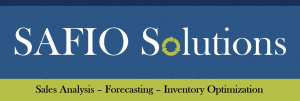Forecasting is the backbone of a business. Forecasting helps companies achieve their core business objectives, or KPIs. It helps create a financial roadmap and budget for a company. It gives the vision to help determine optimal pricing to achieve profitability goals. Forecasting provides sales projections and directs production. There are different approaches to forecasting: top-down, or bottom-up. Determining which is the best approach may depend on the type of business, but often the best option is a hybrid approach, or combination of the two.
Top-Down Planning
The Top-down approach to forecasting is often the simpler of the two and is usually directed by the upper management of a company. High-level company goals are set and then broken out by individual departments, products or services. Marketplace and industry data are used to formulate these goals. Trends, competition and expectations for market share are some of the components used to set company and departmental goals. The top-down approach gives the planners the flexibility to fill into trends at a high level based on the marketplace information. From here, an Open to Buy, budget and category plans can be developed.
Unfortunately, top-down planning has some disadvantages. Since the forecasting is done at a higher level, much of the sales and inventory data is averaged and generalized. Without a plan for individual items, it may be difficult to assess their true performance and make strategic decisions regarding the individual items. The details of the trends and patterns may be lost with top-down planning.
Bottom-Up Planning
The Bottom-up approach is often more accurate than top-down, especially for seasonal businesses, or businesses that have wide swings, because they are so specific and not smoothed out. Individual departments create their own forecasts at a micro level, often at the SKU or size. Trends can be captured very quickly, and strategic decisions can be made at a granular level. By analyzing the business at the micro level, planning is much easier for the following seasons. In this approach, individual item forecasts are rolled up into higher level forecasts. Open to Buy and budgets are derived from the rollups.
Bottom-up planning can be more time-consuming than Top-down planning. Plans and forecasts must be developed for each individual item. The company must also have the systems and resources to be able to support bottom-up planning.
A Hybrid Approach
Often, the best approach to planning and forecasting is a hybrid of the Top-down and Bottom-up methods of planning. This approach serves as a checks and balance system. Are the company goals realistic? Is a particular department over assorted or planned too high or too low based on what is happening in the marketplace? A hybrid approach takes advantage of the benefits of both approaches to planning and forecasting. Data used in bottom-up planning provides insight into the true health of the business, while considering the big picture of the business provided by top-down planning. With eyes wide open, planners can challenge any discrepancies in either the Top-down or Bottom-up forecasts and make informed decisions.
SAFIO Solutions is a software solutions provider that gathers all of a company’s vital data into one location and provides the vision and efficiency necessary to improve forecasting, manage inventory, and make strategic decisions that result in improved operational performance. SAFIO Solutions Sales Analysis and Forecasting Tool© enables companies to do Bottom-up forecasting while also providing comprehensive data to form Top-down plans. Contact us today at for a demo.




